Your Comprehensive Guide To Visit Tate Modern In London In 2026
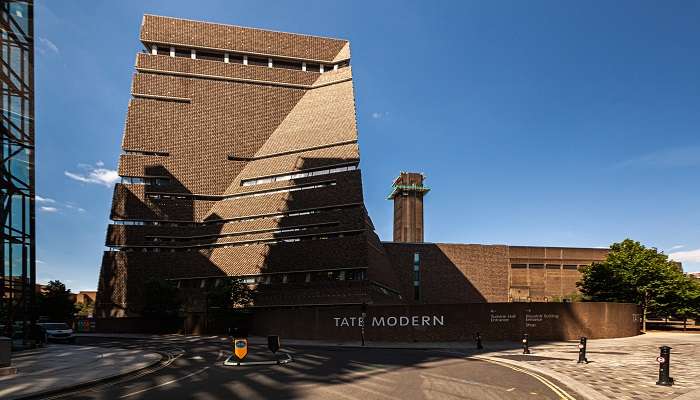
Located on the banks of the Thames, Tate Modern is a major centre for contemporary art in the heart of London. This iconic museum, housed in the repurposed Bankside Power Station, has become a global cultural landmark since its opening in 2000. With its striking industrial architecture and world-class exhibitions, Tate Modern challenges visitors to explore the boundaries of modern and contemporary art. From its vast Turbine Hall installations to its diverse collection spanning the 20th and 21st centuries, the museum offers a dynamic and often provocative artistic experience. Whether you’re an art enthusiast or a curious newcomer, Tate Modern promises to inspire, educate, and spark conversation.
About Tate Modern

Tate Modern, situated on the Bankside in London, is one of the world’s biggest and most famous modern art museums. It is the United Kingdom’s central collection of modern and contemporary art from around the globe.
The Tate Modern was founded in 2000 in the former Bankside Power Station, an architectural masterpiece by Sir Giles Gilbert Scott. The gallery hosts a collection of artworks from the twentieth century to the contemporary period, including works by Pablo Picasso, Yayoi Kusama, and Henri Matisse.
With its massive turbine hall and modern technological exhibitions, Tate Modern receives millions of visitors every year. It is a living gallery for art enthusiasts and a major cultural institution in London.
Also Read: Victoria And Albert Museum
History Of Tate Modern
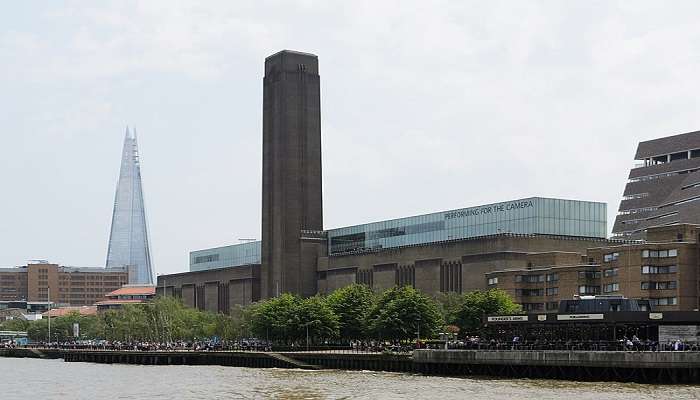
Tate Modern, located in the former Bankside Power Station building, is one of London’s most famous modern art museums. The power station, designed by Sir Giles Gilbert Scott, was constructed in stages between 1947 and 1963 and ceased operations in 1981. It remained in limbo for years as to what the future held for the structure, but it was finally chosen for the Tate Modern in 1994.
The museum was redesigned by the world-famous architects Herzog & de Meuron and officially opened in May 2000. The transformation retained the Turbine Hall and created a glass wing. Due to the increasing number of visitors, an expansion project started in 2004, which resulted in the construction of the Switch House, popularly known as the Blavatnik Building, completed in 2016.
This extension gave extra space for display, performance and state-of-the-art amenities, making Tate Modern one of the top contemporary art museums.
Galleries At Tate Modern
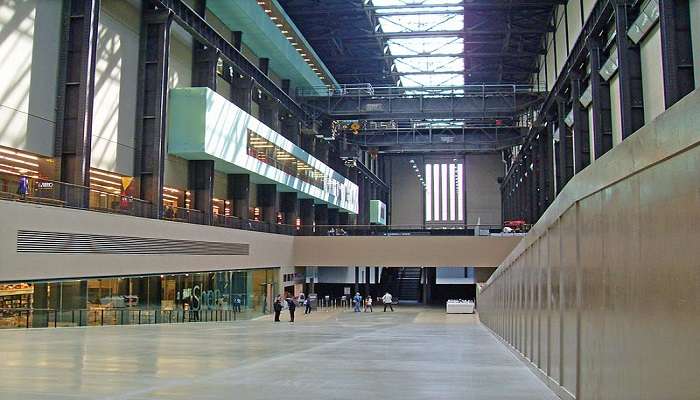
Tate Modern houses modern and contemporary art from around the world, dating from 1900 to the present. The gallery is divided into several sections, which are pretty different from each other. Levels 2, 3 and 4 of the gallery have an extensive gallery area; each level is divided into eastern and western wings containing at least 11 rooms. The gaps between these wings are also used for the smaller galleries on levels two and four. The Boiler House is one of the main sections of the building, and it contains art from the end of the nineteenth century to the present.
Another essential part is the Switch House, which has several floors starting from 0 and reaching the 10th floor. It has galleries on the ground, second, third, and fourth floors. Level 0, called the Tanks, are areas derived from the power station’s former fuel oil storage tanks. The other levels are in a tower extension constructed over these tanks. The Switch House is devoted to the artworks created since 1960.
The Turbine Hall is one of the most distinctive architectural elements of Tate Modern; it spans the whole length of the building from the Boiler House to the Switch House. This is the full height of the power station building, and this space is six stories tall. It is crossed by bridges on the first and the fourth floors only, but other than that, it is divided into two. On level 0, the western part of the Turbine Hall has a ramp gently sloping down from the entrance to offer access to both sides. The eastern end of the gallery is rather large and has a high ceiling that allows for larger pieces to be put in the gallery.
Related Post: Westminster Abbey
Exhibitions At Tate Modern
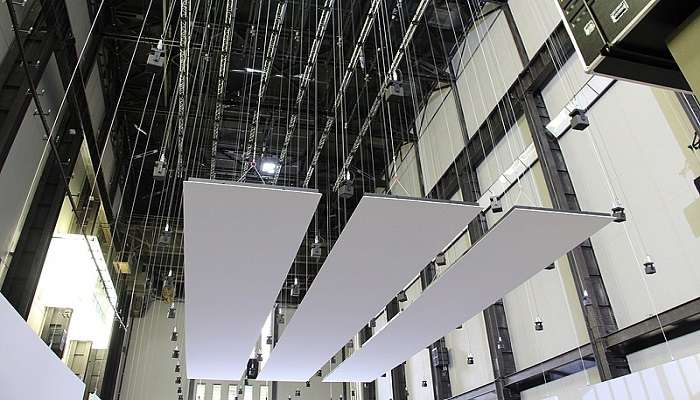
The exhibition structure and history of the Tate Modern, a prominent art gallery in London. Here’s a detailed explanation of each part:
- Tate Modern’s Gallery Layout: The gallery’s collection is organised into eight distinct thematic areas, each focusing on different aspects or themes of modern art. These themes are more permanent, while the specific works displayed within each theme may change periodically. Viewing these areas without admission fees makes them accessible to a broad audience.
- The Turbine Hall: Turbine Hall is a vast area in Tate Modern that was used as the home of generators in the former power station. It is now for large-scale site-specific artworks commissioned by the gallery and exhibited from October to March every year. It houses the following:
- Unilever Series (2000–2012): This series of commissioned works was named after its sponsor, Unilever, which provided £4 for its execution. 4 million. The series was intended to be run for five years, but after seeing its success, it was decided to continue. Notable installations include:
- Louise Bourgeois’s “I Do, I Undo, I Redo” (2000) is a three-part installation about motherhood and personal memory.
- Juan Muñoz’s “Double Bind” (2001): An architectural installation creating an illusionary space.
- Anish Kapoor’s “Marsyas” (2002): A massive red PVC sculpture filling the hall.
- Hyundai Series (2015–Present): After the Unilever Series, Tate Modern secured a new sponsorship deal with Hyundai, covering a ten-year program of commissions. Highlights include:
- Abraham Cruzvillegas’ “Empty Lot” (2015): A work exploring themes of potential and growth using soil from different London parks.
- Kara Walker’s “Fons Americanus” (2019) is a monumental fountain that addresses themes of imperialism, colonialism, and the African diaspora.
- When no series is running, the Turbine Hall occasionally hosts events, performances, or one-off exhibitions, such as a display of Damien Hirst’s diamond-encrusted skull, “For The Love of God,” in 2011.
- The Tanks: The tanks are a unique underground space within Tate Modern. Initially, the power station used them as oil storage tanks. They have been repurposed to showcase video and installation art, with one tank dedicated to specially commissioned works and smaller side rooms for pieces from the gallery’s collection. The space has also been used for live music performances.
- Project Space: Formerly known as the Level 2 Gallery, this smaller space was located on the north side of the Boiler House. It hosted contemporary art exhibitions in collaboration with international institutions, typically lasting 2–3 months. These exhibitions then travelled to the partner institutions. The Project Space is no longer used as a gallery.
- Works are also shown in some restaurants, members’ rooms, and other building areas, such as the mezzanine on level 1 or the side of the Boiler House building. These places offer different possibilities for presenting art in more unconventional environments.
Opening Hours and Entry Fees
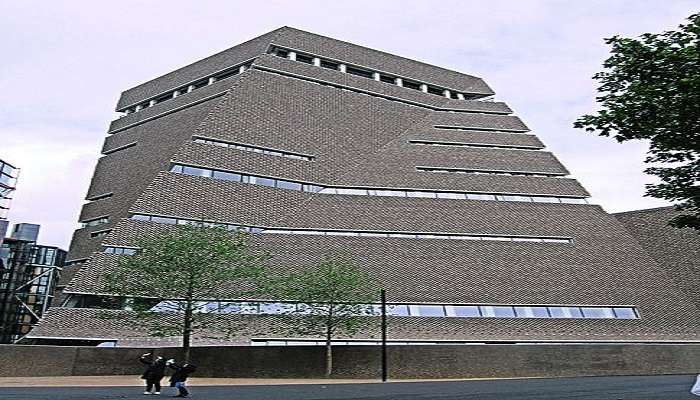
Tate Modern is open Monday through Sunday from 10:00 AM to 6:00 PM, meaning that art lovers can visit the galleries and exhibitions during the week.
Admission to the museum is free, so anybody can appreciate the wide array of modern and contemporary art, but special exhibitions may attract a fee.
Related Post: Trekking Near London
Best Time To Visit Tate Modern

The best time to visit Tate Modern is during spring and autumn, that is, between March and May and between September and November, respectively. A plus side of visiting the museum during these months is that there are usually few people within it, making exploring the different exhibitions enjoyable.
Also, it does not rain most of the time, and the climate is suitable for strolling around the neighbouring areas. Summer (June to August) may be crowded owing to the tourists, while winter (December to February) may be less crowded. Nevertheless, she can also have limited opening hours, and some exhibitions may be shut down. This is because you can get the best out of your visit to Tate Modern if you visit it during the shoulder seasons.
Best Ways To Reach
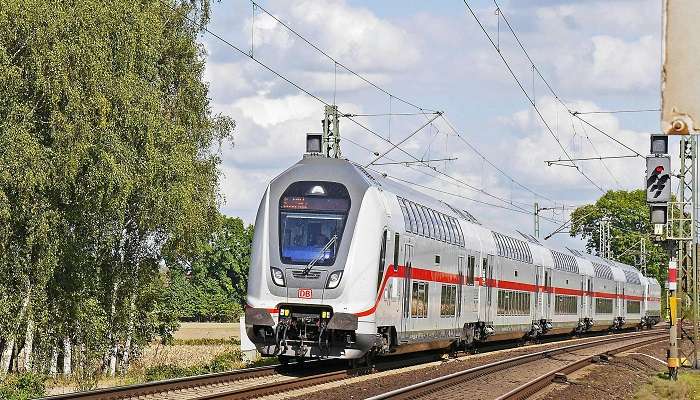
Reaching Tate Modern is convenient thanks to its central location in London. Whether you prefer public transport or driving, there are several accessible options:
By Tube
The nearest tube stations are Southwark, just an 8-minute walk away, and Blackfriars, about a 12-minute walk away. Both stations are on the Jubilee Line, providing easy access to other parts of the city.
By Train
The closest train stations include Blackfriars (a 12-minute walk), Cannon Street (a 15-minute walk), and London Bridge (a 15-minute walk). These stations connect to various train services, making reaching Tate Modern from different regions easy.
By Bus
Tate Modern is accessible by bus routes 40, 63, 100, 381, and 344. Buses offer a direct and convenient way to the museum, especially for those travelling from nearby areas.
You May Also Like To Read: Facts About Buckingham Palace
As we conclude our journey through the Tate Modern, it’s clear that this iconic institution is more than just a museum. The Tate Modern offers an unparalleled experience for art enthusiasts and casual visitors, from its striking industrial architecture to its diverse and thought-provoking exhibitions. Whether you’re drawn to classic masterpieces or cutting-edge installations, there’s something here to inspire and challenge every visitor. Don’t let this extraordinary cultural destination remain a dream—make it a reality. Book your trip to London today and immerse yourself in the captivating world of contemporary art at the Tate Modern.
For our editorial codes of conduct and copyright disclaimer, please click here.
Cover Image Source: Shutterstock
Frequently Asked Questions About Tate Modern
Why is the Tate Modern so famous?
Tate Modern is renowned for its extensive collection of international modern and contemporary art housed in the iconic former Bankside Power Station. It is one of the most visited art museums in the world.
What is famous in the Tate Modern?
The Tate Modern features works by renowned artists such as Pablo Picasso, Yayoi Kusama, and Henri Matisse. Its Turbine Hall and large-scale installations are particularly celebrated.
What do you know about Tate Modern?
Tate Modern, part of the Tate group, opened in 2000. It showcases art from 1900 to the present day and is located in London’s Bankside area.
Is entry to the Tate Modern free?
Yes, entry to the main collection at Tate Modern is free for everyone. However, some special exhibitions may require a ticket.
Are photos allowed in Tate Modern?
Photography is permitted for personal, non-commercial use in the main galleries but not in special exhibitions. Flash photography, camera supports, and selfie sticks are prohibited.
People Also Read:
Places To Visit In London Things To Do In London Homestays In London

With a passion for exploring and travelling to the roads long forgotten, experience the world through enthralling stories and adventures. Join me as I share my experiences at some of the world’s most popular tourist destinations and quench that pestering curiosity with something exciting!











